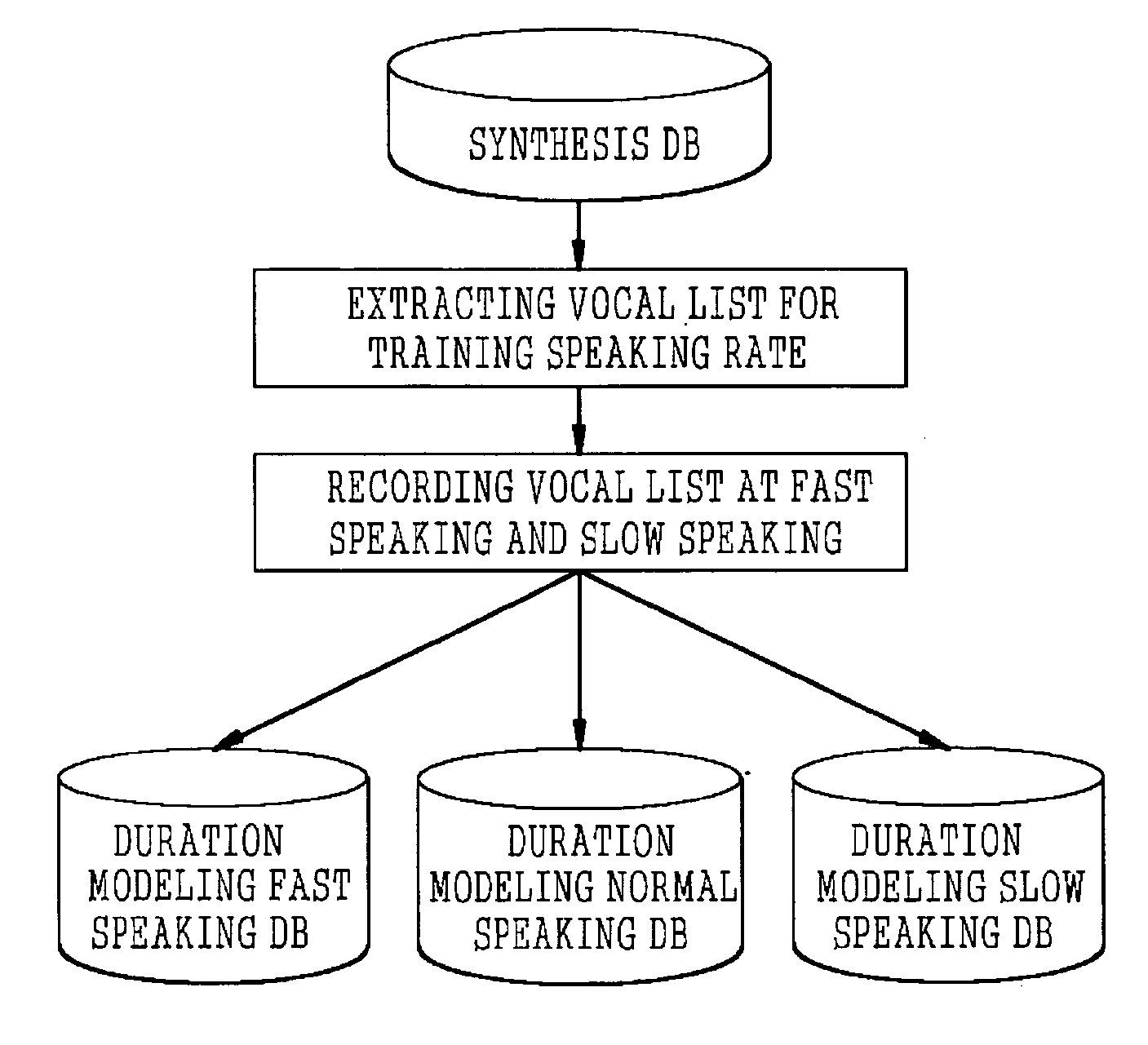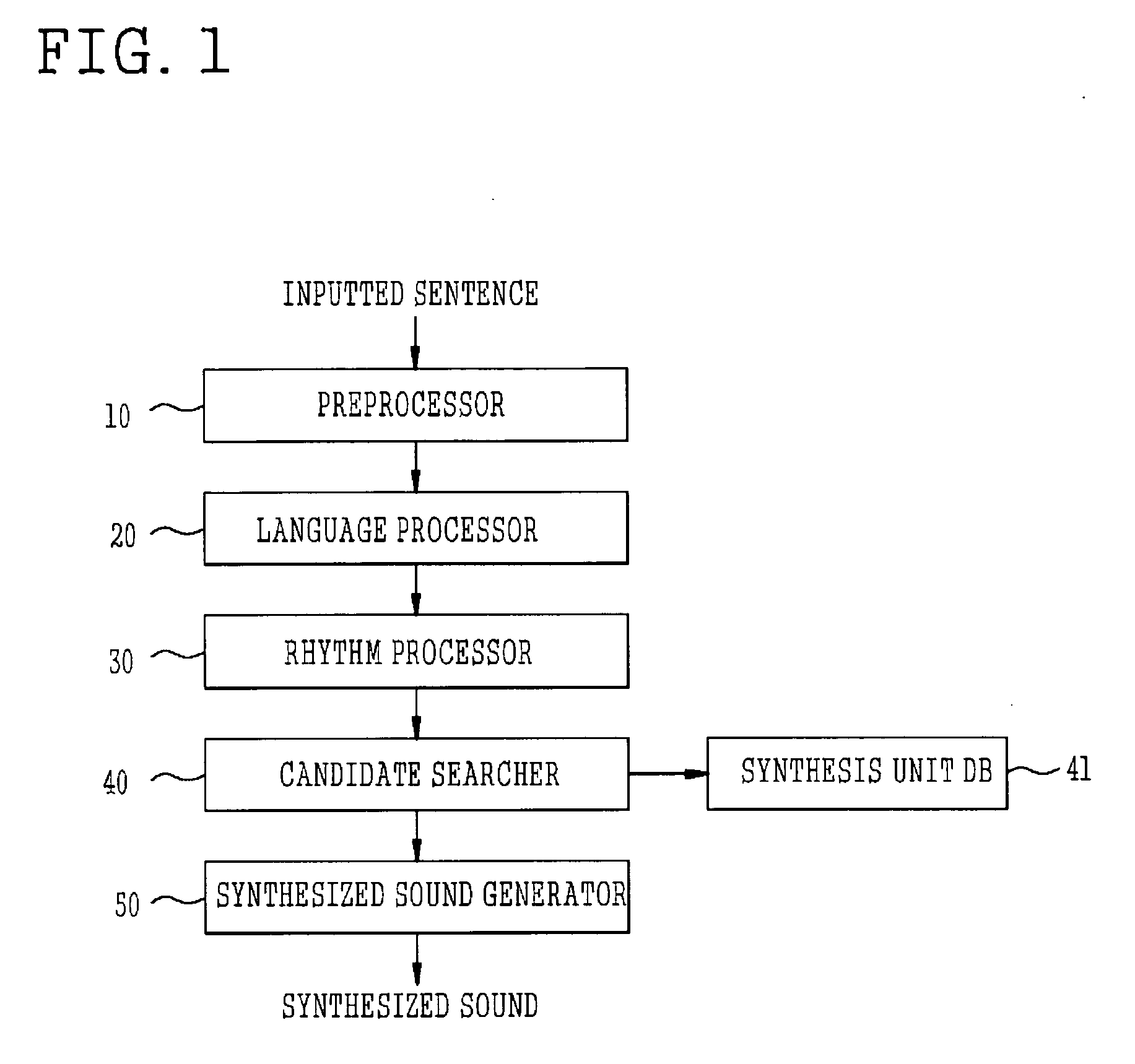Method of speaking rate conversion in text-to-speech system
- Summary
- Abstract
- Description
- Claims
- Application Information
AI Technical Summary
Benefits of technology
Problems solved by technology
Method used
Image
Examples
Embodiment Construction
[0026] Reference will now be made in detail to the preferred embodiments of the present invention, examples of which are illustrated in the accompanying drawings.
[0027]FIG. 1 is a flowchart illustrating a conventional process of generating a synthesized sound in a synthesizer.
[0028] As shown in FIG. 1, the text-to-speech system includes a preprocessor 10, a language processor 20, a rhythm processor 30, a candidate searcher 40, a synthesis unit database (DB) 50, and a synthesized sound generator 60, to sequentially process an inputted sentence and generate a synthesized sound. As described above, in a conventional art, an OverLap & Add (OLA) technique is applied to the generated synthesized sound in a unit of frame, thereby converting a speaking rate.
[0029] However, through a process of building a model for the duration of the synthesis unit dependent on the speaking rates represented in FIGS. 2 and 3, the present invention obtains a continuous probability distribution of the dura...
PUM
 Login to View More
Login to View More Abstract
Description
Claims
Application Information
 Login to View More
Login to View More - R&D
- Intellectual Property
- Life Sciences
- Materials
- Tech Scout
- Unparalleled Data Quality
- Higher Quality Content
- 60% Fewer Hallucinations
Browse by: Latest US Patents, China's latest patents, Technical Efficacy Thesaurus, Application Domain, Technology Topic, Popular Technical Reports.
© 2025 PatSnap. All rights reserved.Legal|Privacy policy|Modern Slavery Act Transparency Statement|Sitemap|About US| Contact US: help@patsnap.com



